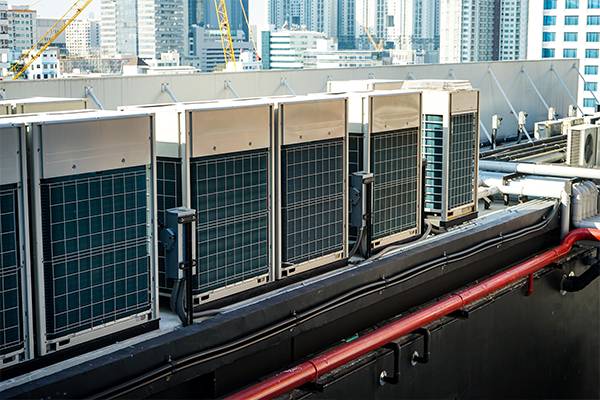
In the diverse climate of Tulsa, OK, finding the optimal heating solution for our commercial properties is crucial. At Cartwright Heat & Air, we focus on identifying heating strategies that are efficient, reliable, and cost-effective, ensuring they align perfectly with the unique requirements of businesses in our area.
Efficient Commercial Heating Solutions: A Comprehensive Guide
When considering the best way to heat a commercial building in Tulsa, OK, it is essential to understand the different types of commercial heating systems available. At Cartwright Heat & Air, we recommend a combination of strategies to ensure efficiency, reliability, and cost-effectiveness:
1. Central HVAC Systems
These systems are ideal for larger commercial spaces. In Tulsa’s fluctuating climate, a modern HVAC system, particularly forced air heating, can provide efficient and consistent heating and cooling, ensuring a comfortable indoor environment year-round. We recommend commercial heating systems with high energy efficiency ratings to keep operational costs low, and forced air systems are often a top choice for their effectiveness and adaptability.
2. Geothermal Heat Pump Systems
For businesses exploring sustainable alternatives to traditional natural gas heating, geothermal heat pump systems are an excellent choice. These heat pumps utilize the earth’s stable temperature to provide heating, which is particularly efficient in Tulsa’s varied climate. Though the initial installation cost is higher, the long-term savings in energy bills make it a worthy investment.
3. Zoned Heating Solutions
Implementing zoned heating controls allows different areas of a building to be heated to different temperatures. This approach is not only energy-efficient but also ensures that heating is tailored to the specific needs of each space within your commercial property. Radiant heating, in particular, provides consistent and comfortable warmth, making it a suitable option for many commercial spaces.
4. Regular Maintenance and Upgrades
Ensuring your heating system is regularly serviced and upgraded when necessary is crucial. Inefficient or outdated systems can lead to increased energy usage and costs. We offer comprehensive maintenance services to keep your system running optimally.
5. Insulation and Weatherproofing
Effective insulation and weatherproofing can significantly reduce heating costs. By minimizing heat loss, you ensure that your heating system works efficiently. We advise businesses to invest in proper insulation, seal windows and doors, and consider energy-efficient windows.
6. Smart Thermostats and Automation
Utilizing smart thermostats and automation systems can dramatically improve heating efficiency. These systems allow for precise temperature control and can adjust heating based on occupancy and time of day, leading to substantial energy savings.
In conclusion, the optimal space heating method for a commercial building in Tulsa, OK, involves a blend of modern technology, energy efficiency, and tailored solutions to meet the unique demands of each space. At Cartwright Heat & Air, we’re committed to helping businesses find the most effective and economical heating solutions, ensuring a comfortable, sustainable, and cost-effective environment.
What Temperature Should a Commercial Building Be Set At in Tulsa, OK?
Determining the ideal temperature setting for a commercial building in Tulsa, OK, is a balancing act between comfort, energy efficiency, and the specific use of the space. At Cartwright Heat & Air, we recommend considering the following guidelines:
Understand Comfort and Productivity Balance
Research suggests that the ideal temperature range for optimal productivity and comfort in a commercial setting is between 68°F to 74°F. However, this can vary depending on the nature of the business and personal preferences. Retail spaces, for instance, might opt for a slightly warmer temperature to encourage customer comfort, while office spaces might lean towards the cooler end of the spectrum to enhance focus and alertness.
Seasonal Adjustments
In Tulsa’s climate, with its hot summers and cold winters, seasonal adjustments are essential. During winter, setting the thermostat to around 68°F when occupied and lowering it during unoccupied hours can save on heating costs. In the summer, a setting of around 74°F is recommended. Adjusting the temperature by even a few degrees during off-hours can lead to significant energy savings.
Consider the Building’s Usage and Occupancy
Different areas of a commercial building may have different heating needs. For example, areas with high foot traffic or large windows may require different temperature settings than more isolated interior spaces. Implementing a zoned heating system can help manage these variations efficiently.
Utilize Programmable Thermostats
Programmable or smart thermostats are invaluable tools for maintaining the ideal temperature in a commercial building. They allow for setting different temperatures for different times of the day or days of the week, aligning with business hours and reducing energy use when the building is unoccupied.
Regular HVAC Maintenance
Ensure your HVAC system is regularly serviced to maintain efficiency. A well-maintained system is crucial for sustaining the desired temperature consistently and efficiently.
Energy Efficiency Considerations
While setting the right temperature is important, so is ensuring your building is still energy efficient. Good insulation, efficient windows and doors, and proper building maintenance all contribute to maintaining a stable indoor environment, reducing the load on your HVAC system.
Legal and Health Considerations
Be aware of any local regulations or guidelines regarding workplace temperatures. Additionally, consider the health and comfort of all occupants. Ensuring good air quality and reasonable temperatures can contribute to a healthier and more productive working environment.
In summary, there is no one-size-fits-all temperature for commercial buildings in Tulsa, OK, but aiming for a range between 68°F and 74°F, depending on the season and specific use of the space, is a good starting point. Utilizing programmable thermostats, considering building usage, and maintaining HVAC efficiency is key to achieving a comfortable, productive, and energy-efficient environment.
When Should I Replace My Commercial Heating and Cooling System?
Deciding when to replace a commercial heating and cooling system is a critical decision for any business in Tulsa, OK. At Cartwright Heat & Air, we advise considering several key factors to make an informed decision:
Age of the System
Typically, commercial HVAC systems have a lifespan of around 15 to 20 years. If your system is approaching or has surpassed this age range, it may be time to consider a replacement, especially if you’re facing frequent repairs or decreased efficiency.
Frequency of Repairs
As heating and cooling systems age, they often require more frequent repairs. If you find that your system needs repairs more often than it used to, or if the cost of repairs is starting to add up, replacing it might be more cost-effective in the long run.
Energy Efficiency
Older systems tend to be less energy-efficient than newer models. If you’ve noticed a steady increase in your energy bills, it could be due to the inefficiency of your aging HVAC system. Modern systems are more energy-efficient, which can significantly reduce your utility costs.
Inconsistent Heating or Cooling
If your system struggles to maintain consistent temperatures or has trouble heating or cooling certain areas of your building, it’s a sign that your system may no longer be up to the task. Uneven heating and cooling not only affect comfort but can also indicate underlying issues with your HVAC system.
Noise and Other Operational Issues
Excessive noise, strange smells, or visible signs of wear and tear on your HVAC equipment are often indicators that your system is nearing the end of its useful life.
Technological Advancements
HVAC technology is continually improving. Newer systems offer advanced features like better air filtration, programmable thermostats, and smart controls that can improve indoor air quality and operational efficiency. If your current system lacks these features, an upgrade can bring multiple benefits.
Regulatory Compliance
Ensure your system complies with current environmental and safety regulations. Older systems might not meet newer standards for energy efficiency and environmental impact.
Business Expansion or Renovation
If you’re planning to expand or renovate your business space, it might be a good time to upgrade your HVAC system. A larger or altered space may require a different heating and cooling capacity or layout.
In summary, the decision to replace a commercial heating and cooling system in Tulsa, OK, should be based on its age, repair history, efficiency, performance, and alignment with current technology and regulations. Upgrading to a new system can offer improved efficiency, lower operating costs, and better climate control, contributing to a more comfortable and sustainable business environment.
Take the Next Step with Cartwright Heat & Air
Ready to upgrade your commercial heating and cooling system? Contact Cartwright Heat & Air today! Our team of experts will provide you with the best solutions tailored to your needs. Enjoy enhanced comfort, improved efficiency, and significant cost savings. Let us help you make a smart investment in your business’s future. Schedule your service today!








